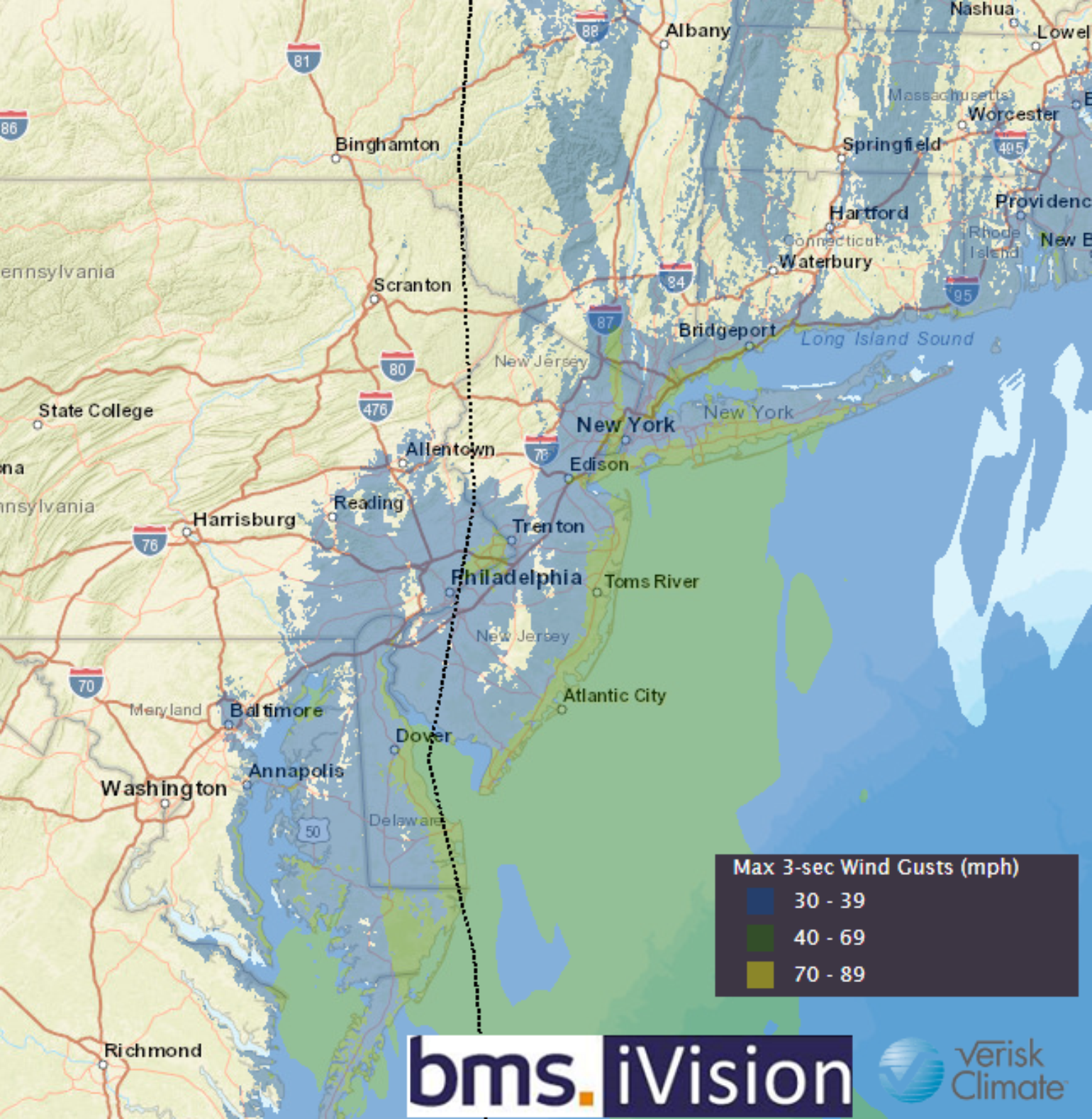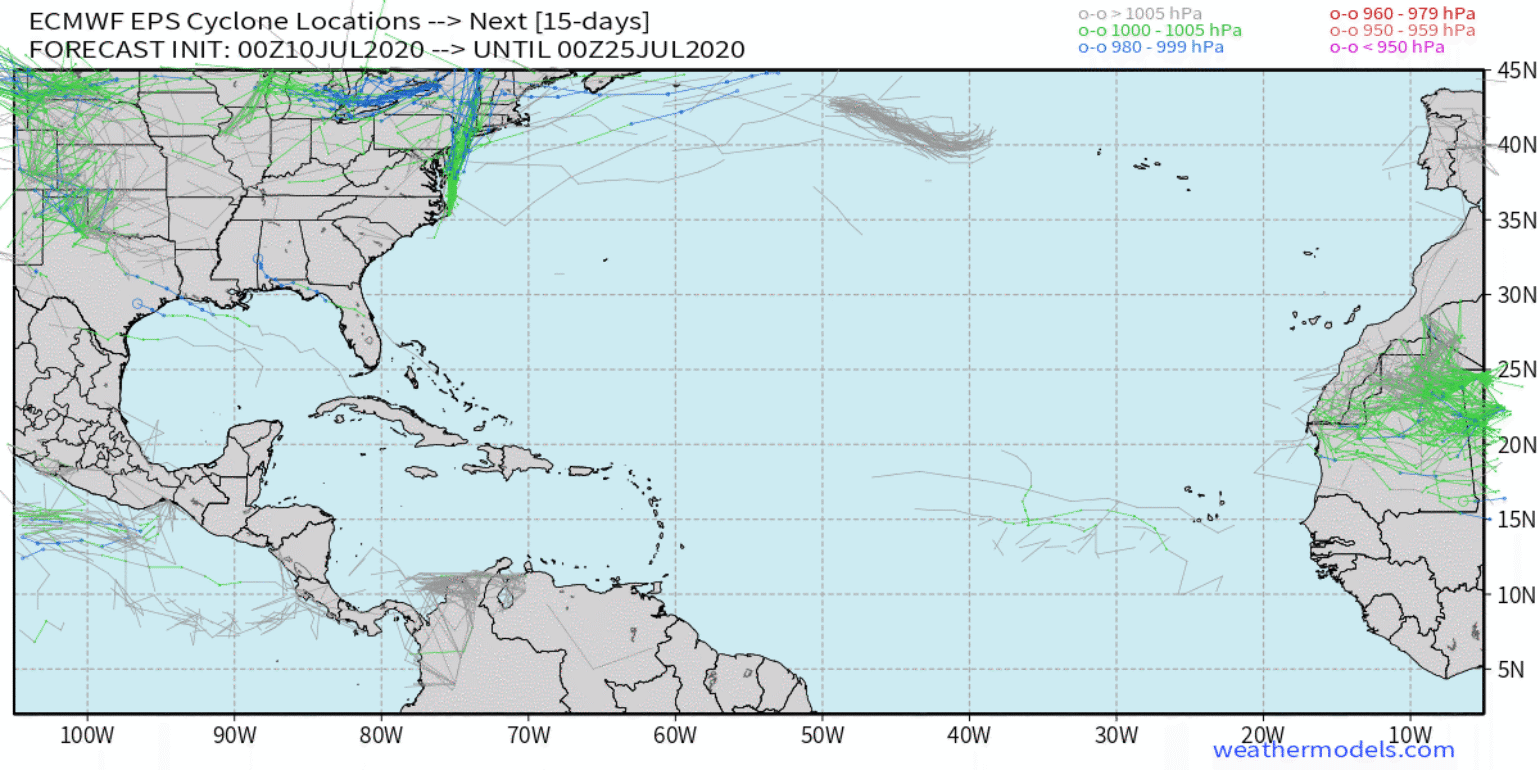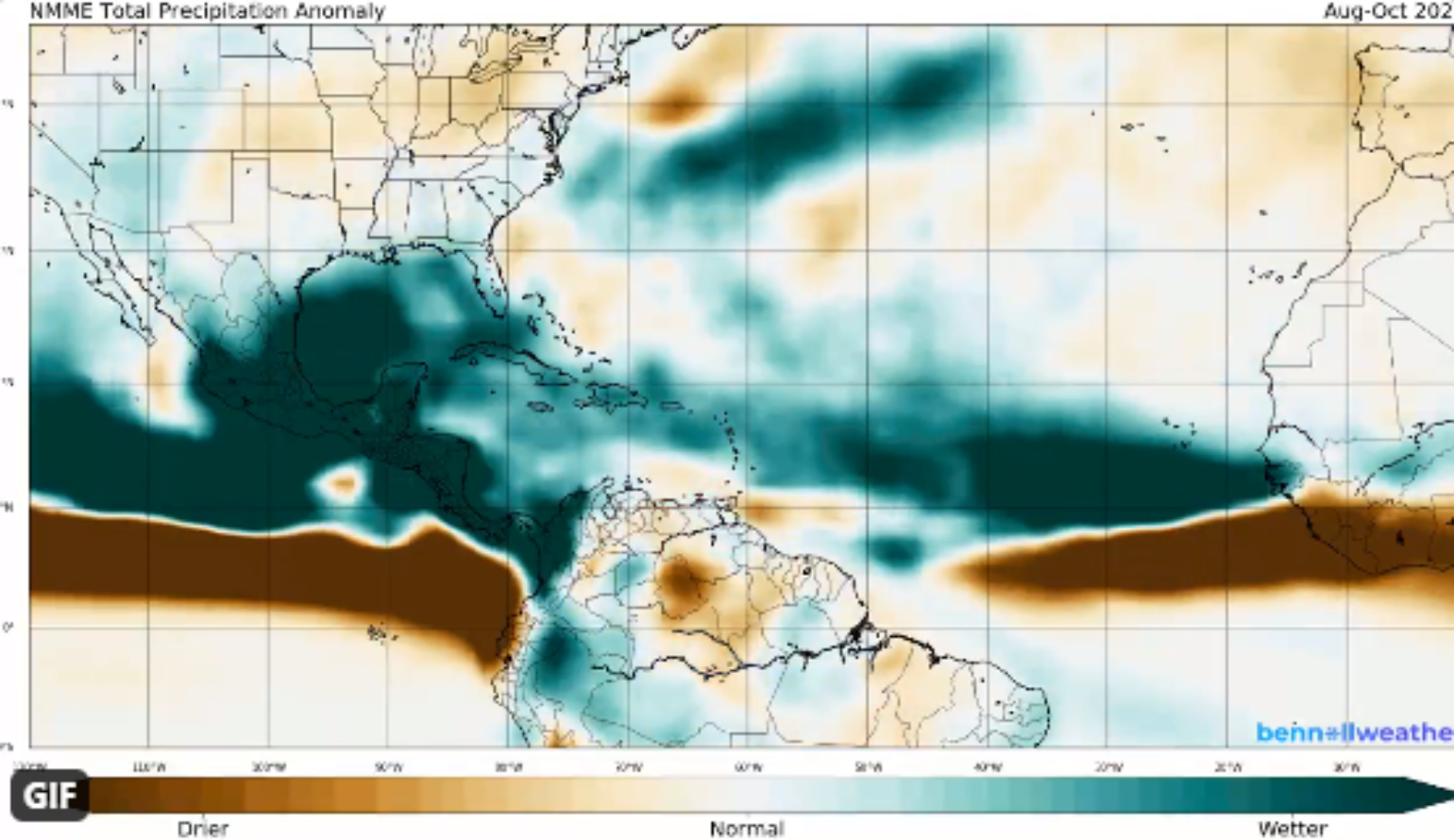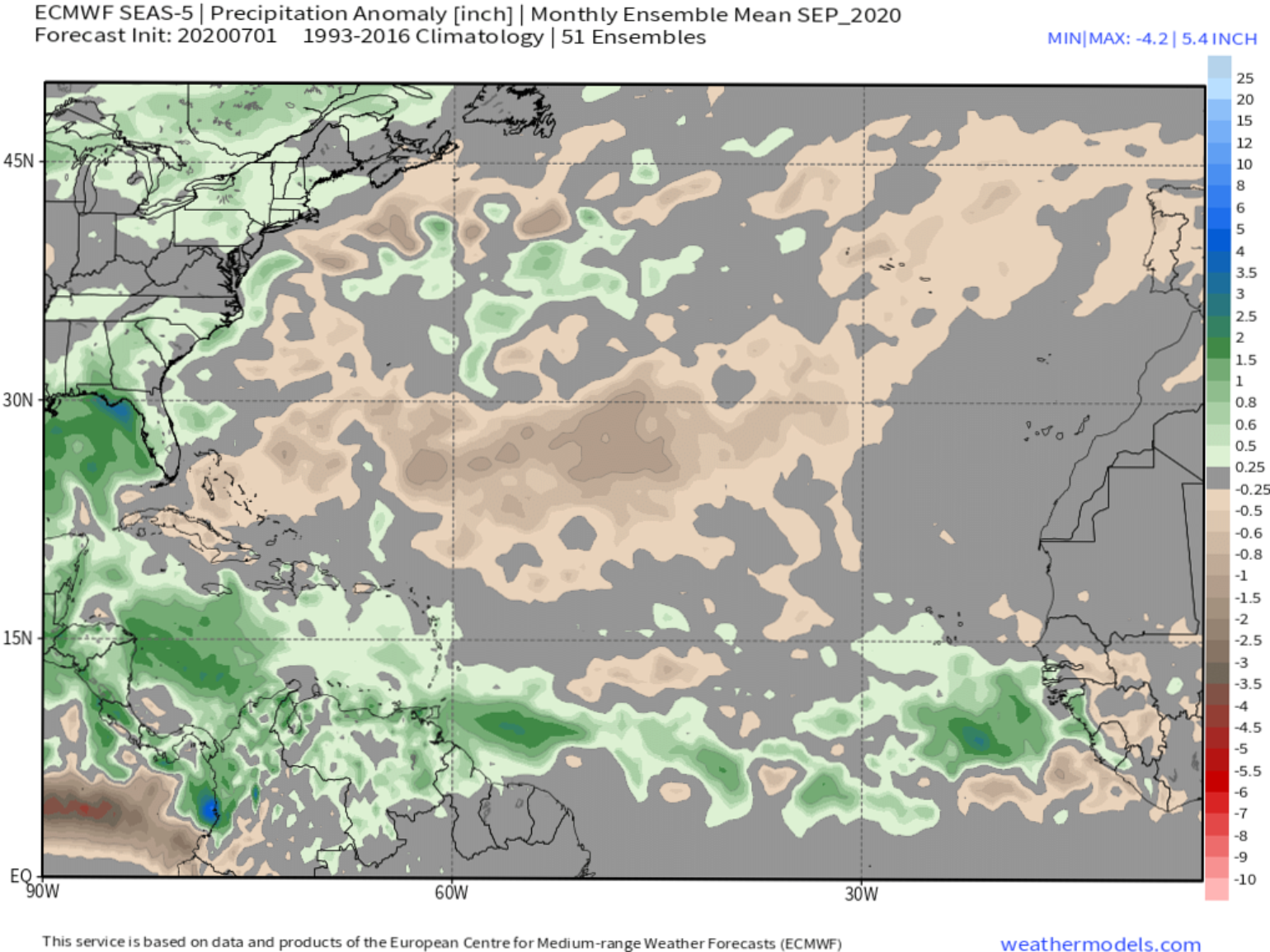By Andrew Siffert - Vice President / Senior Meteorologist
No One Saw This Active of a Start
Forecasters were calling for an extremely busy 2020 Atlantic hurricane season, but no one predicted 6 named storms by July 9th. If you do a simple extrapolation of this level of naming, which appears to be a new storm about every 8 days on average since Arthur on May 17th, through the rest of the 2020 Atlantic hurricane season you get 23 more storms that could form this year. This would surely get the season through the entire Atlantic hurricane season name list and into the Greek alphabet just like 2005. Furthermore, Tropical Storm Fay is the earliest 6th Atlantic named storm formation on record. The previous record was Franklin in 2005 on July 22nd, which means Fay is the earliest 6th named storm on record by 12 days and is 56 days ahead of the 1979 – 2019 average 6th storm formation date.
Tropical Storm Fay Impacts
Fay is currently located about 90 miles south of Cape May, New Jersey with sustained winds of 50 mph. Overnight the world-leading ECWMF model shifted the predicted track of the tropical storm to a trajectory up the Hudson River Valley, and therefore it is expected that Fay will make landfall later this morning along the New Jersey coastline and track inland up the Hudson River Valley. The New York and New Jersey coastline is no stranger to named storms with Superstorm Sandy impacting the areas in 2012, but this is the first named storm to make landfall in the area before August since hurricane Bertha in 1996.
Fay will mostly be a heavy rain-producing storm (6-8 inch of rain) but still could bring wind gust of 50 mph along the coastline of New Jersey and Long Island as Fay moves northward.

When compared to the winds that the New Jersey shore experienced in the April 13th derecho, Fay will be far less impactful with much weaker tropical storm force winds. In fact, the April derecho winds gusted over hurricane force in parts of coastal New Jersey with Wildwood, NJ reporting a 87 mph wind gust. These wind gusts caused damage to many locations across the state totalling in around 100 million dollars of insured loss. It does not appear we will see this level of damage from Fay.
A Look Ahead Into the Heart of the Season
Much like the other storms this hurricane season, Fay will be a short-lived and weak tropical storm. This is in contrast to the record-breaking 2005 season that devastated the insurance industry. That year three of the first six named storms were hurricanes, including Category 4 Dennis and Category 5 Emily. Both hurricanes made landfall and were storms that originated from the Main Development Region (MDR) of the Atlantic Basin. Thus far in 2020 the storms have been short-lived and have been forming at higher latitudes. Cristabol is the only true tropical originating storm this year, with Fay being the 3rd consecutive storm of this season to form north of 35 degrees North. Additionally, most of the storms this season have only lasted 2 days and Fay will likely last 3 days. These short weak storms have contributed very little to the overall Accumulated Cyclone Energy (ACE), which currently only ranks 36th out of all the early season that have had a named storm before July 9th. 2020 is now one of only three other seasons 2002, 2011 and 2013 without a hurricane in the first six names storms. 1933 and 2005 still are in categories of their own when it comes to early season tropical troubles.
There are no other significant candidates for a tropical depression or storm development over the next 5 days, and in fact, based on the ECWMF model there is little activity now for the remainder of the month.

The basin will become eerily quiet given the newest CSU forecast which calls for a very active Atlantic hurricane season with a forecast of nine hurricanes, four of them being major and an ACE forecast of 160 (Currently only at 7.5 YTD for 2020). The insurance industry has a long season ahead if the forecasts are to verify these numbers.
To reach these numbers we need stronger tropical waves to come off West Africa instead of dust, which has been keeping these tropical waves at bay. However, I do not think that this can last forever, and furthermore, these dust waves can also provide a hint as to what to expect in terms of tracks. A few weeks back news headlines were abound with talk of a Saharan Air Layer (SAL) sweeping across the Atlantic and into the Caribbean and Gulf of Mexico, but what none of these headlines included was how the dust was showing us the overall prevailing winds and the track of storms to possibly come. If the dust tracked into the Caribbean and Gulf of Mexico, what do you think tropical waves will do when they form? The dust did not track up into Bermuda or into the middle of the Atlantic Ocean.
As mentioned above, Fay is now the 5th storm this year to form from non-tropical origins outside the deep tropics. While it shows the subtropics are favorable for development, it is not a clear indicator for future activity, unless storms start forming in the MDR which will happen eventually. MDR storm formation before the middle of July is fairly rare, which is why the 2005 season is still one of the top active years. Additionally, as previously mentioned, July should now go quiet much like the quiet 21 day period between Cristobal and Dolly as large scale upper air suppression moves in over the Atlantic Ocean. However, in about 3-4 weeks a strong Madden Julian Oscillation will start to propagate back into the Atlantic Basin bringing better upper air support for convection, so it is only a matter of time until the MDR of the Atlantic awakes with a string of named storms.
I have already discussed how the dust provides clues of future tropical wave tracking, but we can also look at what some of the season forecast model precipitation anomalies show, because where there is a high positive rain anomaly there is also likely a tropical system.


Remember the peak of the hurricane season in terms of activity is September 10th, but the overall insured loss peak is later in September, which makes sense given it takes 1 to 2 weeks for a storm to track out of the MDR and make landfall. Also, late-season storms like Sandy, Wilma, and Michael are starting to skew the back half of the season, so the insurance industry has to just wait for now, but we are starting to see clues of how the season will evolve.
